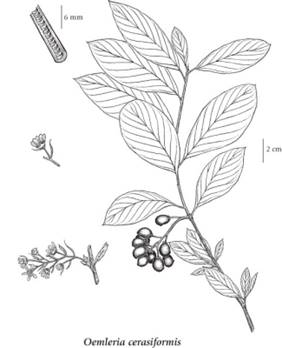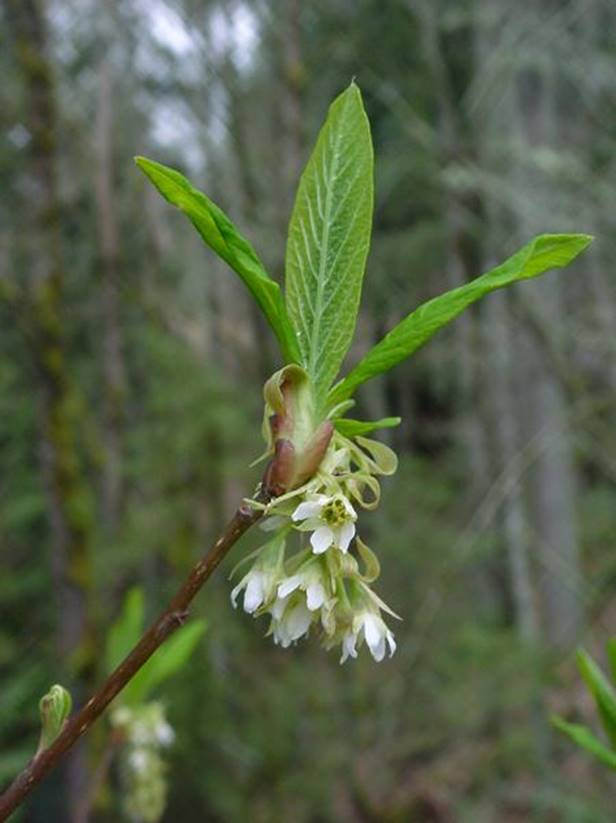cold raining night the geese are yet in large flocks and do not yet
appear to have mated. what I have heretofore termed the broad
leafed ash is now in blume. the fringetree has cast the corolla
and it’s leaves have nearly obtained their full size. the sac a com-
mis is in blume.. Meriwether Lewis, April 11, 1806. Weather report from journal. (fringtree – likely Indian plum)
This is a common shrub of the west coast that ranges from British Columbia to Santa Barbara County, CA. It grows to a height of 15 ft. and has lance-shaped leaves. It is the first deciduous shrub to flower in late winter and an important early season nectar source for hummingbirds, moths and butterflies, native bees, and other pollinators. Though the middle part of its range it is predominantly found below 1,000 ft. elevation, but in the southern extent of the range it is found as high as 5,000 ft.

t is also known as osoberry (oso – bear in Spanish) and is the only species in the genus Oemleria. The fruits are edible (though bitter) and look like small plums that are dark blue when ripe. Native Americans used the bark to make tea and they chewed the twigs as a mild anesthetic and aphrodisiac. Pick off a leaf and it smells and tastes like cucumber.
The plant is dioecious (meaning two houses) – male and female flowers occur on different plants. The flowers are whitish-green and have a bell shape. The resulting fruits are about 0.5 inches long. The wood is fine-grained and strong but because of its small size its uses are limited. The relatively straight shoots can be used for arrows and larger ones for a bow.

Indian plum is a popular plant for restoration projects because of its ease of propagation, rapid growth, and wide tolerance of soil moisture. It is easily spread from birds eating the fruit and dispersing the seeds. Birds such as waxwings and robin gobble down the ripe fruit. It also is quite shade tolerant and is a favorite for native plant gardens.

The Genus name honors Augustus Gottlieb Oemier, a German naturalist based in Savannah, Georgia who was the first to collect the species. The species name, cerasiformis means cherry-shaped.
A few years ago, I was walking in the forested area of the Nisqually National Wildlife Refuge and noticed that the rufous hummingbirds were just on a tear, zipping around and chasing one another. You could hear them buzz as the flew by. After a few moments I noticed the source of the excitement – looking through the still barren understory, beginning to wake from a winter slumber, you could see scattered but plentiful Indian plum flowers.
The humming birds were in a mild feeding frenzy for the first sips of nectar after a long winter, racing from plant to plant, sometimes chasing others away or themselves shooshed away by a more dominant bird. The Indian plum in my front yard native shrub garden has not yet bloomed – but I’m watching it, but not with such a keen interest as the neighborhood hummers.
